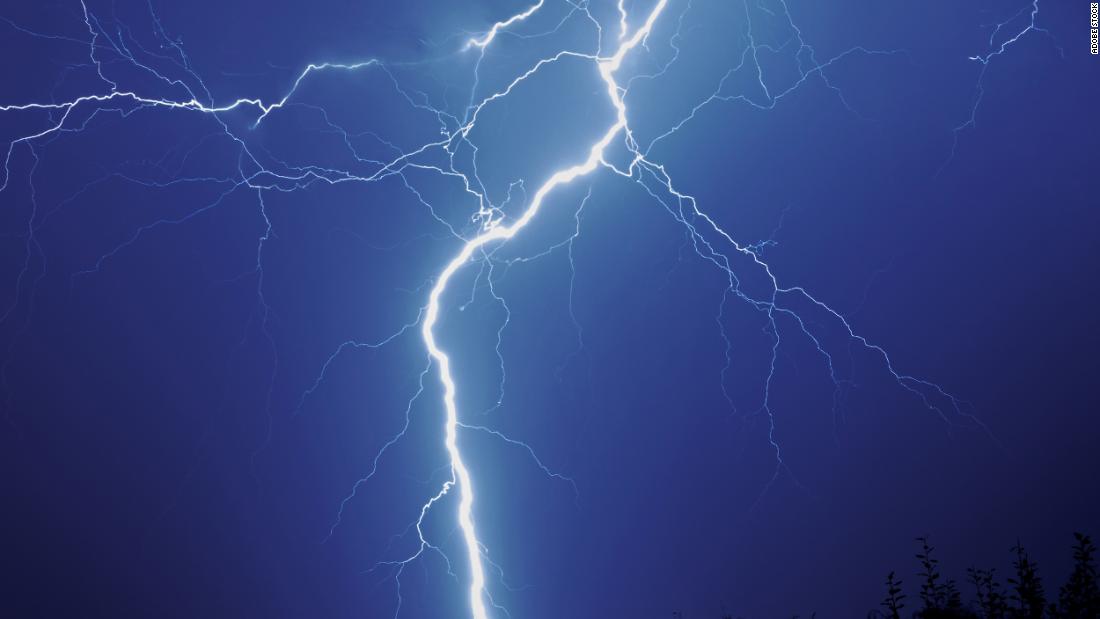Know the places where there is more lightning activity 0:44
(CNN) --
Researchers have discovered a possible link between the coronavirus pandemic and fewer reported lightning cases during lockdowns around the world in the spring of 2020.
Global lightning activity declined nearly 8% in 2020 amid lockdowns brought on by the pandemic, according to research presented in December at the annual meeting of the American Geophysical Union (AGU), a nonprofit scientific organization dedicated to promote "discovery in Earth and space science".
Scientists working on the study discovered a possible cause for this drop in lightning activity: a decrease in atmospheric aerosols, tiny pollution particles suspended in the air around us.
These aerosols, produced through the burning of fossil fuels, among other things, can paint a picture of what's happening in Earth's atmosphere, from weather patterns to natural and man-made events, experts say.
Aerosols have a "profound impact on climate" due to their ability to upset the Earth's energy and balance, according to NASA, and can also contribute to lightning.
advertising
As countries around the world imposed quarantines, lockdowns and curfews to limit the spread of Covid-19, air pollution levels fell dramatically, reducing the amount of aerosols released into the air, the study found. .
The 2020 World Air Quality Report from global air quality information and technology company IQAir said human-related emissions from industry and transport fell during lockdowns, with 65% of cities The global nations surveyed experienced better air quality in 2020 compared to 2019. Some 84% of nations surveyed reported improvements in overall air quality.
"Aerosols help give water droplets in the atmosphere something to stick to, so certainly having more aerosols will potentially help create the conditions you need to have lightning," said Chris Vagasky, meteorologist and lightning applications manager. at Vaisala, a private environmental monitoring company that tracks lightning around the world.
"Having more droplets in the atmosphere makes it possible for those water-ice collisions and things like that to create an imbalance of electrical charge, which leads to lightning."
The unstable atmosphere created an unfavorable environment for thunderstorms
Researchers have discovered a possible link between the coronavirus pandemic and fewer reported lightning cases during lockdowns around the world in the spring of 2020.
Researchers from the Massachusetts Institute of Technology, the University of Tripura in India, and Vaisala Inc. spent a three-month lockdown period from March to May 2020 measuring lightning activity by analyzing data from the Global Lightning Detection Network. and the Global Lightning Location Network.
They determined the amount of aerosols in the atmosphere using satellite measurements, AGU said in a news release.
The study concluded that lightning and aerosol activity were significantly reduced in Africa, Europe, Asia and the Americas during the lockdown period.
Those results were supported by Vaisala's Annual Lightning Report 2020, which recorded about 170 million lightning events in 2020 across the continental United States, about 52 million fewer than in 2019.
This decrease in lightning marked the largest year-over-year change Vaisala has ever recorded, according to Vagasky.
"When you look specifically at the period from March to May 2020 across the planet, there was higher than normal atmospheric pressure and lower than normal atmospheric instability," Vagasky told CNN.
"This created an environment across the planet that was unfavorable for thunderstorms to develop, and you need to have the right conditions for thunderstorms to develop before you can worry about aerosols within the clouds."
While aerosols play a big role in how much lightning we get each year, they're not the only major factor that comes into play, according to Vagasky.
From large-scale weather patterns to very small-scale particle collisions within the storm, he added, it's likely that more than one specific factor has resulted in a decrease in the amount of lightning produced.

